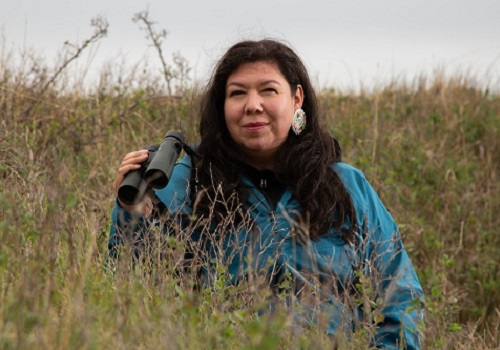Subscribe: Spotify
It’s been said that 60 million Buffalo once called the plains of Canada and the U.S. home. These majestic animals provided food, shelter and clothing to Native American tribes while helping sustain the land’s complex ecosystem. But over-hunting, disease and other factors saw the buffalo’s numbers dwindle by the 20th century.
According to Indigenous filmmaker and buffalo academic Tasha Hubbard the buffalo is intimately connected to Indigenous history. Unsurprisingly, the animal’s story mirrors that of the Indigenous peoples and their mistreatment over the years. In a recent film Hubbard documents the efforts by some tribes to protect and revitalize the buffalo herds, offering hope for the animals, the environment and Indigenous communities across North America.
She joins us next.
Filmmaker, Buffalo academic and activist, Tasha Hubbard, is hopeful that rematriation can help sustain Indigenous communities, the majestic animal, and the land they once roamed
Welcome to In the Business of Change, where we speak with social entrepreneurs impacting their communities and the world. I’m your host Elisa Birnbaum publisher and editor in chief of SEE Change Magazine.
On today’s episode we speak with award-winning filmmaker and buffalo activist Tasha Hubbard. In our conversation she explains the profound and unique interrelationship between the buffalo and Indigenous communities. We discuss her new documentary Singing Back the Buffalo. Tasha then shares how buffalo rematriation (or revitalization), if successful, can prove a turning point for Indigenous nations and the sustainability of the land these animals once roamed.
Listen. Learn. Enjoy. Share.

